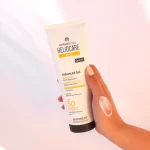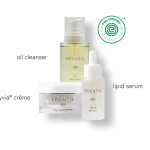October was Menopause Awareness Month so this month, I’d like to focus a little on the effects of low oestrogen during Menopause, on the skin. Women are finally feeling empowered to speak out about the changes their bodies undergo towards the end of their reproductive lives, and quite frankly, it’s about time society started listening.
I’ve heard countless patients report how surprised they have been about just how wide-reaching their perimenopausal and menopausal symptoms can be. Our hormones affect every system and cell in our bodies, so it should follow that we feel the impact of their imbalance, and subsequent decline, in a big way. Aside from the sometimes-devastating symptoms of anxiety, low mood, irritability, hot-flushes, poor sleep, reduced libido (to name a few), our skin is also affected.
During the perimenopause, when oestrogen levels start to drop, there is a relative imbalance between the reproductive hormones. Many women start to notice a change in their skin – from oily to dry, or vice versa; acne breakouts; redness and sometimes rosacea. Once periods have stopped, and oestrogen levels have plummeted, the skin may take on a very difference appearance. Many of the attributes of we associate with youth and beauty are a direct result of the action of oestrogen within the skin.

In a nutshell, oestrogen:
– Plumps up the skin by aiding the retention of water: increasing overall skin
thickness
- Maintains natural oils to lubricate the skin
- Provides the structure, elasticity and firmness to the skin by promoting the
production of collagen via fibroblast cells
- Is anti-inflammatory, reducing acne and sensitivity
Without oestrogen, collagen fibres decrease in number, can become stiff and break and as a result, the skin becomes, dry, flaky, thinned out, wrinkly and saggy. The enzymes that break down collagen (metalloproteinases) also increase in the skin, further adding to the structural decline. Hyaluronic acid content also declines after the menopause, further drying out the skin. This kind of imbalance of the normal homeostasis of the skin means that post-menopausal acne is not uncommon, and the skin can also become extra sensitive to UV exposure.
Thankfully, there are ways we can help combat this. For women on HRT, replacement of oestrogen counterbalances these natural changes, and a youthful appearance may be maintained, or, to some extent restored.
For those unable to take HRT, there are ways we can tweak our skincare routine to help. Below are my top tips for rebalancing menopausal and perimenopausal skin. I would recommend these both for women taking HRT, and for those who have not yet started, or who are unable to.
Ideally, from the age of around 40, women should:
Cleanse
Use milky or creamy cleaners, or cleansing balms, to avoid further drying of the skin.
Hydrate
Dehydrated skin can become dry and sensitive. Make sure that your skincare routine contains serums containing Hyaluronic acid.
Hyaluronic Acid – Acts like a sponge, drawing water in and trapping it, helping to maintain hydration. During perimenopause and menopause, HA levels fall so topping them up is highly recommended.
Moisturise and Lubricate (what?)
Yes, Oiling the skin is a thing!
Cermides – are the natural oils produced in the skin. They glue the skin cells together and create a barrier to prevent water loss. Try to choose a moisturiser containing ceremides to improve elasticity and fine lines.
Firm
Peptides – Peptides are the building blocks of proteins. Serum or creams containing peptides semm to be able to help stimulate collagen production and reduce wrinkles.
Vitamin C – is a great antioxidant and can protect you skin from UV damage and can also help to build collagen. A serum with added ferulic acid can help stabilise the Vitamin C product and adds in another antioxidant in its own right.
Retinols – Retinols are often considered the holy-grail of anti-ageing products and can help stimulate cell turnover, and increase collagen production. They also treat acne.
Go carefully
However, as menopausal skin can be particularly sensitive, some women won’t tolerate harsh or high-concentration products – take care to use a gentle formulation to prevent irritation. If irritation or dryness does occur, it may be best to focus on the other products.
For oestrogen depleted skin
ZENii’s Rebalance Menopause Day and Night Cream is specially formulated to care for skin prone to the effects of low oestrogen. It has been designed using a combination of the powerful anti-ageing and collagen-stimulating ingredients as discussed above, protecting from damage from free-radicals and restoring the barrier function of the skin. Winner of Best Menopause Cream at Get the Gloss Awards 2022, this is your go-to for quenching and plumping.
SPF… Every. Day.
Last, but certainly not least, the most important single thing you can do to prevent skin ageing is to wear a high-factor SPF daily. Aim for at least factor 30+. Rain or shine. Sun damage speeds up collagen loss and all the visible signs of ageing. It can also cause problematic dark spots.
I would recommend a high factor, mineral-containing SPF as the last, but most important step in your routine. Try ZENii’s Antioxidant SPF 50 for an additional, lightweight layer of glow.
Ultimately, we are all going to age, but for women, the menopause and a drop in oestrogen is a pivotal point in our lives.
To slow down the skin-ageing process at any point in life, it is also vitally important to keep a check on other skin-influencing factors and give up smoking, eat a healthy diet, exercise regularly and aim to effectively manage stress.




